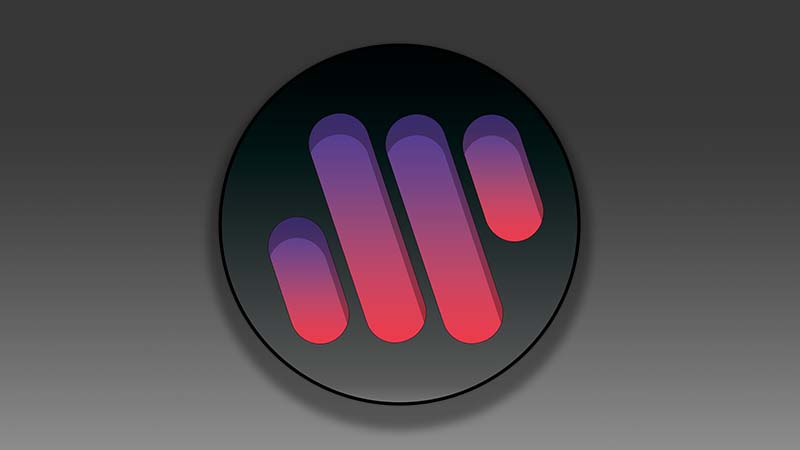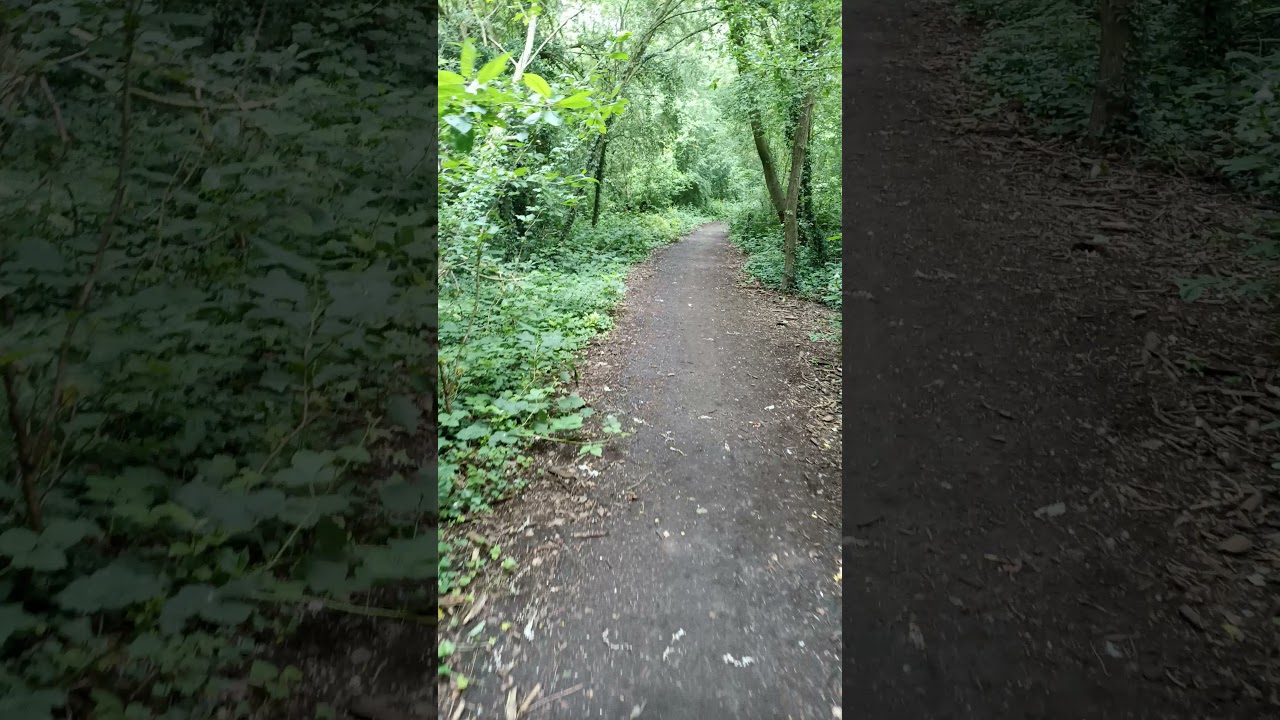Smartphones
Redmi Note 10s : test / review
Published on: 23-05-2021 / Modified: 07-10-2022
The Redmi S range first appeared in 2020 with the Redmi Note 9s. The Redmi Note 10s is a phone that fits between the Redmi Note 10 and the Redmi Note 10 Pro. The Redmi Note 10s should be seen as a phone that will take over the external appearance (size / weight) of the Redmi Note 10 with a little more performance and a better camera. It is therefore a mid-range phone that offers a good price / performance ratio and sometimes it is details that will distinguish it from the other two models.
Xiaomi launches so many models that sometimes it's hard to choose, so I'll try to highlight things that might tip you in favor of this phone. There is never really a big winner at Xiaomi, their phones are always good at something and not so good at other things, so the choice will have to be based on what is important to you. If for example the photo is a priority with you, I would say that the Redmi Note 10s should be the best choice but I could only confirm that after finishing this test.
Manufacturer web site:
https://www.mi.com
Site where I have bought the Xiaomi Redmi Note 10s: https://s.click.aliexpress.com/e/_9ulmmV
Structure of my tests
I test the phones according to a pre-established structure (see below) to provide you with as much information as possible. Unfortunately, this takes a long time. Some tests like network performance tests take several days and for photo tests I sometimes have to wait until the weather is suitable to take pictures in good conditions. I am therefore obliged to publish the tests step by step, so I invite you to come back if the test is not complete at the time of your visit.Price Xiaomi Redmi Note 10s
The list below shows the prices for the Xiaomi Redmi Note 10s from more than 50 sites around the world. If you are not satisfied with any price, you can subscribe to a price alert to be the first to be notified when the price drops.The above links are affiliate links from companies such as Amazon, Gearbest, Aliexpress,... If you appreciate my work, I would be grateful if you could purchase these products through these links. It costs you absolutely nothing but I get a small commission that allows me to buy the material I test. Thank you very much!
Timeline
May 12, 2020: I buy the Redmi Note 10s on Aliexpress for pre-order, I imagine that I will have to wait 3 weeks before receiving it.June 23, 2020: I finally received the Redmi Note 10s after more than a month of waiting, it seems that someone came on foot from China to deliver it to me.
Why this phone?
I'm always looking for good deals, I have scripts that run 24 hours a day to find the right prices. I had seen that Xiaomi was going to launch a Redmi Note 10s but I hadn't paid too much attention because I had already bought a lot of Xiaomi this year. I am all alone to do my tests, I have to make choices. I changed my mind when I received an alert for the Redmi Note 10s and its launch offer close to 150 €. At this price, it is a price close to the Poco range and the Redmi Note 10s is far from being ridiculous compared to the Poco range and it is equipped with a good photo sensor with the Samsung GW3 that I tested on the Xiaomi Mi 11 Lite.So before overdosing on Xiaomi, I still let myself be tempted by this Redmi Note 10s, I think that this phone will find its place in the Xiaomi range and that it will come to do shade to the PRO version which is barely a little more powerful and which does not offer a better photo sensor.
Unpacking
First configuration
The Redmi Note 10s is the first phone I tested with MIUI 12.5 installed by default, I have never tested this version of MIUI on other phones before. Does this change anything? Yes and no. The graphical interface of the phone configuration is different, the screens have been revised with more space for illustrations and the interface is generally more airy. The configuration steps do not change and the fact of having redesigned the MIUI screens, the difference between these screens produced by Xiaomi and those imposed by Google becomes even more obvious.The improvement is therefore mainly of a cosmetic order and the remarks I made previously remain entirely valid with in particular this desire of Xiaomi to try to impose its cloud and its applications is a constant at Xiaomi.
Finish
The back of the phone is made of plastic and offers a slightly metallic reflection of light. This is a recipe that Xiaomi has already used on other phones by varying the colors and the type of photo block. This format is nothing original but I find that the whole is quite successful, it does not breathe premium but the phone does not deform on the back as was the case with the Redmi Note 9.
The Redmi Note 10s does not shine with its originality but it offers a really good level of finish for this price range, it assumes an entry-level character without neglecting its exterior appearance.
Specifications
The information below comes from the Device Info HW application. The application provides detailed technical information about the tested phone. I bought the 6Gb / 64Gb version and you will find all the technical characteristics of the phone on the following screenshots.
Here are the peculiarities I noticed compared to the Redmi Note 10:
- The Redmi Note 10s uses the same screen
- The Redmi Note 10s uses the same fingerprint sensor
- The Redmi Note 10s offers 2Gb more RAM
- The wifi chipset is completely different and you will see in the rest of this test that this is a good thing
- The GPS of the Redmi Note 10s uses a Mediatek chipset which offers better accuracy than other brands
CPU / GPU Performance
Xiaomi does not seem to want to bind itself to a particular manufacturer for its CPUs and GPUs, some models are equipped with Snapdragon processors and others with Mediatek processors. What does this change for the consumer? Not much because these processors offer more or less the same performance with sometimes some pure performance differences and sometimes better energy management. The most visible factor of difference between these two families of processors is the precision of the GPS where I have never obtained a precision below 3 meters with a Snapdragon whereas with a Mediatek, I obtained a level precision of 1 meter. The Redmi Note 10s is equipped with a Mediatek processor, so I would expect the GPS performance to be better than the Redmi Note 10 Pro.
For the graphics part we find the same two families of GPUs with on one side the Qualcomm Adreno and on the other the ARM Mali, the Redmi Note 10s uses an ARM Mali G76 that the 'we also find in other phones like the Huawei P30, Redmi Note 8 Pro, Realme 6 and many more. It is therefore not a last generation GPU but it offers a good level of performance for a majority of users.
Benchmark Antutu/3DMark
I got a score of just over 276,000 points with Antutu, this score puts the Redmi Note 10s above the Redmi Note 10 and below the Redmi Note 10 Pro. The Redmi Note 9T and the Samsung Galaxy A52 are other examples of phones that are very similar in performance.With such a high score, the Redmi Note 10s will give you a comfortable everyday experience and you can even play most of the games without having to make too many sacrifices on the level of graphics. Only more greedy games like Fortnite will be a little less fluid.
Gaming
To test the performance in game, I download the mobile PUBG game and evaluate the in-game experience, graphics level and depth of vision. This game is quite demanding and should help you evaluating the performance of a phone.

Network performance
The Redmi Note 10s is not 5G compatible but I wouldn't be surprised to see a 5G version appear later this year. For 3G / 4G frequencies, the Redmi Note 10s offers good frequency coverage that will allow you to use it anywhere in Europe.Signal 4G (before december 2020)
The ability to pick up the network correctly is an essential element for a phone but it is only very rarely measured. To measure a phone's ability to pick up the network, I perform a large number of measurements on the same cells to be able to compare phones under similar conditions. The signal is measured in dBm, a value of -90dBm indicates a worse signal than -70dBm. These measurements are therefore taken under real conditions and not in a laboratory, they are not scientific but give a good indication of performance.
Signal 4G (from December 2020)
I decided to change the methodology for measuring the network because I noticed that the configuration of the mobile network changes over time. This makes it more difficult to compare phones because the conditions are no longer exactly the same.
To overcome this problem, I set up a device that captures 24 hours a day about ten parameters from the mobile network (ex: cell id, rssi, rsrq, snr, frequency,...). I then place the phone next to the device for 24 to 48 hours taking the same measurements so that I can compare them.
Overview of the phones tested with this methodology
I performed 957 measurements in 4G to assess the network sensitivity of the Redmi Note 10s and unfortunately Xiaomi took a step back because the sensitivity of this phone is significantly lower than the best Xiaomi I have tested over the past 6 months. On the whole test, I got a difference of more than 5 dBm between this phone and my measuring device where the Redmi Note 10 got a score very close to the measuring device.
On the following graph, we can clearly see that this phone never manages to match the sensitivity of my measuring device:
Download/Upload speed
To test the download speed, I have identified some 4G cells offering good performance where I test all my devices several times to see what download and upload speed they can achieve.
Wifi performance
To test a phone's ability to receive the network properly, I take measurements near my router and then remotely (and always at the same place). This gives me an average in dBm where a value of -90 dBm indicates poorer performance than a value at -30 dBm.Wifi signal
I measured a signal of -17 dBm near the router and -67 dBm at a distance, these are good values, they are exactly the same values I got with the Redmi Note 10 while the Redmi Note 10s uses another wifi chipset. The difference between these two phones will be more visible in the download test. The Redmi Note 10s therefore offers good wifi sensitivity.
Download/Upload speed
To test the speed in Wifi, I connect to my router in 2.4Ghz and 5Ghz (if available) and use the Ookla application to measure the speed.
GPS performance
To test the quality of the GPS signal I use the Offline Maps application and I make the same train trip in pedestrian mode. Why? In pedestrian mode, the GPS does not artificially correct the signal to stick to the road, it has no markings, so you can see the actual position. I then use an application to measure the accuracy of the signal.

Battery range
The Redmi Note 10s is equipped with a 5000 mAh battery, this type of capacity has almost become a standard at Xiaomi. The battery charges fairly quickly (161 minutes) but at the end the last 10 percent take longer. It takes about 35 minutes to reach 20%.Photo camera test
To test the quality of photos produced by a phone, I do a technical test (resolution, sharpness, chromatic aberration,...) in studio (identical conditions) to evaluate the technical part objectively. From the second half of 2020, I built my own laboratory to take completely objective technical measurements. I then take pictures in real conditions to see how the camera performs. I then evaluate these photos according to my criteria but I publish the photos so that you can evaluate the result according to your criteria.Hardware
The Redmi Note 10s is equipped with a Samsung GW3 48 Mpix sensor. I had the opportunity to test this sensor in the Xiaomi Mi 11 Lite and I was positively surprised with the result. I have not yet finished my technical tests of this sensor but I see in particular that it offers better color rendering than the Redmi Note 10 Pro which is however supposed to offer better image quality. The Redmi Note 10s is the cheapest Samsung GW3 equipped phone at the moment.For the ultra wide angle part, the Redmi Note 10s takes over the Sony IMX 355 which I tested in at least 5 other phones this year. The quality of ultra wide angle sensors is inferior to the quality of wide angle sensors but this Sony IMX 355 is doing quite well.
Default app

Photo quality
Photo test / studio
The ultra wide angle sensor is a Sony IMX 355, it is the most used ultra wide angle sensor at Xiaomi this year. I have already tested it at least 5 or 6 times this year. This type of sensor always produces photos of lower quality than the main sensor, but in this range of sensors, the Sony IMX 355 is undoubtedly one of the best sensors. The studio test shows that the Sony manages exposure better than the Omnivision sensor, there are obviously large deformations but this is normal, this sensor is not designed to take close-up photos. The sharpness in the center is a little worse than that of the Omnivision sensor and it is normal for this kind of sensor but the area of sharpness is wider than with the Omnivision sensor.
Photo test / sunny
Main sensor: Omnivision OV64B
I haven't tested many Omnivision brand sensors and the ones I tested were rarely good cameras. So I had a little apprehension before testing this Redmi Note 10s and unfortunately my intuition was good. Before going into the details of this analysis, I will first reframe the context. The Redmi Note 10s is sold between 150 and 200 €, in this price range there are smartphones equipped with sensors such as the Sony IMX 582 or sometimes even the Sony IMX 682. The competition is therefore tough and to be able to compete with these cameras. , we have to set the bar high enough.
I chose this first photo because it illustrates quite well what this Omnivision sensor is capable of doing. I took this photo under the sun, the light was good. The first thing that strikes me are the colors, they are bland and the photo lacks contrast. The AI mode corrects this but sometimes forcing the colors to an unreal saturation. The dynamic range is not very wide either because the sky is very clear and the clouds are not very well drawn. The sharpness is fairly average, the foliage quickly loses sharpness.
I took a photo at the same time with a phone using a Sony IMX 682 and this is what it looks like:
The Omnivision sensor of this Redmi Note 10s therefore does not reach the level of the competition and for a little less money the Redmi Note 10 or the Poco X3 do better.
Secondary sensor: Sony IMX355
Photo test / cloudy
Not yet available / tested
Test photo / night
Not yet available / tested
Video quality
Stabilisation

Video normale conditions

Video low light
Not yet available / tested
Audio quality
To test the quality of the phone's audio output, I connect the device's audio output to a measuring tool, then play sounds on all frequencies and measure the differences between the original sound and the sound produced by the phone. In this way I measure the phone's ability to correctly reproduce all sounds.Frequency Response
This test is intended to test the device's ability to correctly reproduce all frequencies. The white line in the middle of the graph is the ideal situation and the other colors come from tests on different phones. A deviation from the reference line indicates a deviation from the ideal situation. To see good sound at all frequencies, it is therefore necessary to get as close as possible to the reference line.
Dynamic Range
This test is designed to test a phone's ability to play sounds at different volume levels. Here too, the phones must be as close as possible to the reference.
Noise Level
This test aims to identify if the device under test is able to reproduce sounds without too much noise. A high score indicates a low parasite rate, a lower score indicates a higher presence of parasites.
Screen quality
To test the screen, I use a colorimetric probe that measures the color accuracy of a screen, as well as other parameters to see if a screen is able to correctly reproduce an image. I also test the brightness level to determine if the screen will be able to display an image in full sunlight.Colorimetry
Brightness / Contrast
I got a very high brightness level on this Redmi Note 10s, I measured a brightness of 729cd / m² in sun mode, it's really a lot. I got a similar score with the Redmi Note 10, such a brightness level will allow you to use the phone in direct sunlight.
Xiaomi was the first to bring amoled screens below € 200 and the Redmi Note 10s also benefits. The use of amoled offers almost infinite contrast and therefore in this price range, the screen of the Redmi Note 10s is undoubtedly one of the best.
Biometry
The Redmi Note 10s uses a side fingerprint sensor like on most Xiaomi phones released this year. This fingerprint sensor works really well to such an extent that when I have to test a phone with another type of sensor (ex: under the screen), I tend to turn it off.Operating system

What's new?
- launch of MIUI +: this feature allows you to associate your phone with your computer as offered by Samsung with Samsung Dex. The association is done by a QR code but I think the Redmi Note 10s does not have access to this feature because I did not see it in the settings
- security reinforcement, it is by possible example of running an application in a sandbox to prevent a poorly kept application from end up infecting the rest of the system.
- a new note-taking tool with the ability to draw
- new sounds, live wallpapers
- reduced power consumption
Encoutered bugs
Not yet available / testedAccessories Xiaomi Redmi Note 10s
Compare Xiaomi Redmi Note 10s with the others
Test / Review conclusion
I tend to trust Xiaomi and I often buy their smartphones without having read any reviews on the internet. In most cases it goes well and there are cases where unfortunately Xiaomi takes a wrong step. Xiaomi has flooded us with so much new models this year that the competition among the various Xiaomi models is stiff and you have to compare Xiaomi with Xiaomi first before looking at what is being done elsewhere. The Redmi Note 10s is not a bad phone but it does not compare with other Xiaomi phones in the same price bracket, I am thinking in particular of the Redmi Note 10 or the Poco X3 (or even the Poco X3 Pro depending on the price). 'possible promotions).
The Redmi Note 10s has a price / performance positioning and in this game, it comes out a winner if we limit ourselves to the Redmi range. As soon as you look across the wall at Poco, you quickly find yourself with more fierce competition. I imagine not everyone is a fan of the Poco design and this Redmi Note 10s might find its place among those looking for low-cost performance without the Poco gamer-type identity. The Redmi Note 10s has a good amoled screen, this also distinguishes it from the Poco which is limited to an IPS screen. Unfortunately, I cannot give it more positive points compared to the Poco.
The photo part of this Redmi is clearly not at the level of what Xiaomi usually does and as it is an important purchase criterion for many buyers, I recommend looking instead on the side of the Redmi Note 10 (see my test) or even the Poco X3 (with or without Pro). The other weakness of this phone is the sensitivity to the 4G network, it is below average so if there are any of you who use their phones for phones (yes it still happens), the Redmi Note 10 does better. .
Apart from performance, design and screen, the rest are pretty average. The sound is good without being extraordinary, the GPS signal is average, the battery is average, ... In short, I will not spend too long on this phone, I have seen more positive tests on this phone and I do not understand so I let you judge for yourself the quality of the photos as well as the other points that I put together in this test.
Strengths
- finish
- performance
- screen
- correct battery life
- wifi download speed
Weaknesses
- network sensitivity in 4G
- photo / video quality
Alternatives to this product
If performance is not a priority for you, I would recommend the Redmi Note 10 instead. If performance is important, the Poco x3 Pro will do much better in performance but also for many other points.
 LAURENT WILLEN
LAURENT WILLENHead of myself on this blog
I share my passions on my blog in my free time since 2006, I prefer that to watching nonsense on TV or on social networks. I work alone, I am undoubtedly one of the last survivors of the world of blogs and personal sites.
My speciality? Digital in all its forms. I have spent the last 25 years working for multinationals where I managed digital teams and generated revenues of over €500 million per year. I have expertise in telecoms, media, aviation, travel and tourism.











































Questions/Comments